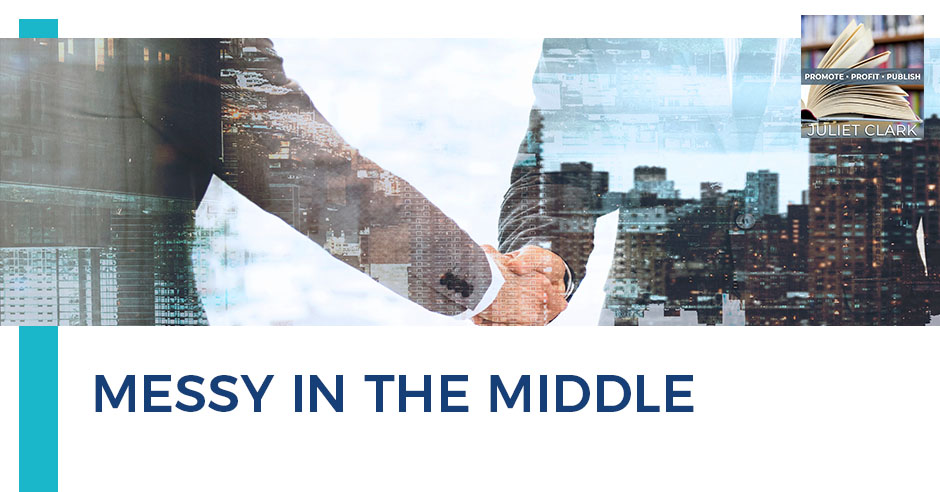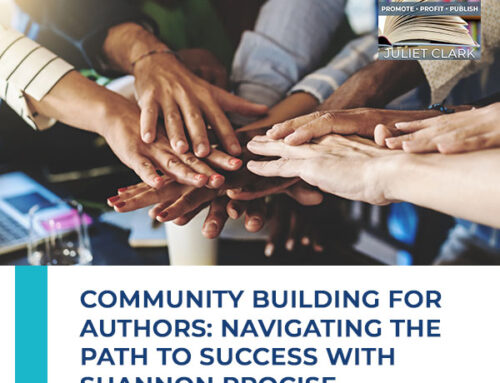
Success isn’t just about reaching the top; it’s about ensuring your journey doesn’t break you along the way. In this episode, we have Jackie Nagel talk about the unpredictable world of business growth, balance, and strategic transformation. Come and join us as we explore the challenges of the “Messy Middle” stage in the world of business. Jackie explains how consistent growth rates are crucial for a company’s sustainability, especially during uncertain times. But as the episode goes further, we touch on the deeper, more human side of success as well. Tune in now and learn how to deal with the messy middle!
—
Watch the episode here
Listen to the podcast here
Messy In The Middle
We have a great guest who is also a 2024 magazine contributor. I’m excited for you to hear her insights because 2024 could be an interesting year for businesses. Not only are we looking at almost certainty of a recession, but also, it’s an election year, which is always a bad year for many businesses. Before we get started with our guests, I’d love to invite you to go over and check out the magazine www.BreakthroughAuthorMagazine.com. Our goal is to help authors sell more books.
Our common theme throughout is that you will see our methods, tactics, procedures, and whatever you want to call them to sell books on your own and get rid of the 55% that distributors take. Just a little whistle-wetter. Imagine that you’ve produced your first book and it’s $20. The retailer who sells it gets 55% or $11 of that. It doesn’t even count the cost of printing the book. The authors are being left with less and less. Consider that this is your life’s work. It is important that you make money and generate revenue from it.
Our guest is Jackie Nagel. She’s the Founder of Synnovatia, a strategic business coaching and consultancy firm. She is known for her unwavering commitment to supporting small businesses and her deep interest in science-based performance strategies. Jackie’s approach involves providing personalized strategic coaching tailored to the individual needs of her clients, both on a personal and professional level. Her clients greatly appreciate her keen insights into what it takes to succeed in a constantly changing and increasingly demanding business environment. For those of you who are reading right now and you’ve written a book and you own a business, you know that it’s true. Stay tuned for Jackie.
—
Jackie, welcome. I’m so excited to have you as part of the magazine for 2024.
Thank you so much. It’s such a great opportunity to work with you.
We’re going to have other opportunities, too, but I’m excited about that because the government keeps saying we’re not in a recession. We are, and now we’re getting into 2024, an election year, where typically businesses start pulling back their money because there’s so much uncertainty. I feel like between the two, 2024 is going to be a challenge for people. What are your thoughts on that?
It’s interesting. I think that this is a challenge for some people regardless of the economy because perhaps they haven’t set their business up to function well, so they have a tendency to get blown back and forth on whatever happens to be going on. For those who have established, have proven their business model, their client base, and their sales and their marketing model, they have actually a lot more strength and sustainability.
It’s not like they’re not going to be affected by it, but the impact is much less. One other thing I want to say is that one of the things that we’ve noticed is that companies that grow at a rate of about 15% every year will double in five years. They’re impacted by circumstances around them. Ideally, companies that grow at a rate of 20% year over year have greater sustaining power. That’s something to keep in mind. When we hit the recession in 2008, the companies and the small businesses that I work with, those who had that 18% to 20% growth rate year after year were impacted but not to the same degree as other people.
It’s very important to go towards that growth every year and to keep upgrading technology and upgrading your systems. That’s probably one of the biggest things that interested me in The Messy Middle. I’ve been a part of a mastermind for a while. I’m growing, but there are two things. I don’t see the growth consistent. When I’m on this mastermind, I hear the same problems over and over and I don’t feel like anybody’s solving them. Tell us a little bit about The Messy Middle.
It’s like that Groundhog Day movie. They wake up every day. We started looking at The Messy Middle because of the stages that a lot of my clients were going through. They seem to hit a plateau and it happened around $250,000 to $300,000. The growth started to stall. Regardless of what they did, they just stayed stuck. It was still very overwhelming. There was a lot of chaos and stress going on. There is limited cashflow.
We started looking at, “What’s going on for businesses in this arena?” What we found is there were some strategies and tactics that we could put in place. We started to unravel everything so that people could start moving forward. One of the biggest things that I learned by working with my clients and I’ve said this so often, is, “What got you here won’t get you there.” We can’t use the same tool set or toolkit that sits $200,000 or $250,000 to get us to $500,000. It doesn’t work. It becomes craziness. It’s about up-leveling the mindset, skill set, and technology. Also, talent and a lot of different factors.
What do you think is the biggest factor there? From what I hear on those calls, I hear business people are not setting good boundaries. It’s like a pattern over and over. They come to the table with the same problem and I sit there on the screen and I’m like, “Set some boundaries.” What do you think it is? I’m not the expert here.
It’s so individual for every business what kind of challenges they have. You were saying setting some boundaries. I’m thinking, “They’re bringing problems to the table that require that.” It’s interesting because for a lot of the clients that I work with, their biggest challenge, I would have to say, would be, “Maybe boundaries are part of this.” It would be the mindset. They’re used to doing things by themselves.
Now, they can’t do everything by themselves anymore and they need to bring in their talents, which is always challenging because I always feel like talent has an evil twin called delegation. It’s like, “Let it go,” like that of Frozen. This is going down a rabbit hole on the talent aspect, but it’s hiring good-quality talent. Don’t scrimp on your talent. Don’t cut corners on talent because you will pay a price for that. It’s a big drain on cash if you’re hiring talent you can’t trust to do the job. It’s because then you can’t delegate. You should be able to delegate to them.
For me, it was the mindset of seeing people shift how they saw themselves from being the, “I do it all.” Even though I have a business, I’m functioning mentally like a solopreneur, thinking about, “I’ve got to start growing my team and sharing some of the responsibility of the workload with other people.” That’s hard for a lot of people to let go and trust.
You don’t just let it go. There’s a process that you put in place so that you can trust the people. It’s hiring the right talent. It’s onboarding them correctly. It is mentoring them properly and then giving them the work to match their skills, but also understanding yourself and what you need to hear from them and get from them in order to eventually trust them.
That’s probably the biggest thing I hear that I was saying over and over like, “You haven’t let go of that yet?” The same people will get on and they’ll talk about that. “I’m so overwhelmed. I’m stressed. My family’s not getting attention.” It’s like, “Did you hire those people yet?”
A friend of mine who’s in HR and I teamed up to put together a performance management system for a local accounting firm. I do the strategy card and the growth planning. She did the HR part. It was so funny because there was an issue that kept coming up with this one employee. It was like, “We love her. She’s fabulous. I think the best of her. She’s the greatest,” and then it was all the complaints about her performance or lack thereof.
Finally, about the third, we both gave them ideas and suggestions of what they needed to do and they never did anything with it. Finally, when they brought it up the third time, we said, “I’m sorry, that’s off the table. We won’t discuss that with you anymore.” It was because it was a waste of time. Why keep talking about that if you’re not going to do anything about it? That was the impetus that they were like, “I guess we better do something about this.”
Sometimes, it’s easier to complain than to get into action. Every company has that great employee that everybody likes, but they’re not necessarily the most productive. I ran into that at Mattel. The guys that were universally liked were also the ones that walked around for an hour after they got there in an hour after lunch schmoozing instead of working.
The one thing that I would say, too, is if people are having trouble taking action, there’s a reason why. It requires a little bit of digging to find out why. Sometimes, it’s a matter of maybe the action plan is not complete enough for them. It doesn’t feel comfortable enough for them to take the required action. Once we can drill down into that and find out why they’re not taking the action and then we solve that problem, it becomes much easier for them to do that.
If people are having trouble taking action, here's a reason why, and it requires a little bit of digging to find out why. Share on XWhat you’re saying is you are a part psychologist, too?
I have a client who calls me his business shrink. It’s about performance. It’s not just the performance of the people who are on our team, but it’s our own performance and things that trip us up as well.
A lot of what you do is work-life balance, too, because I know you get into personal growth as well. Can you talk a little bit about that?
How do I want to say that? Success for the sake of success is just for the money part of it. I think it’s dangerous. I have had my own personal experiences where it’s the way in which I was working. I was tremendously successful, but the way in which I was working was damaging my health. Based on my own experiences, I try and help my clients think about how to achieve this success without breaking their health because it can be done. There is a way. We’ve got to think differently about it.
Success for the sake of success is just for the money part of it and it’s really dangerous. Share on XBusiness objectives and goals are not separate. They don’t stand alone. Why are we in business? Why do we do what we do? Certainly, we love it, but there’s an engagement. It might be to fund a retirement or to buy a house. I always feel like I can’t just look at the business. I have to look at the entire person because the business is one piece of it. I don’t always have real good luck in getting them, too, but I try.
There was a workshop that I was involved in the ’80s. It was with Judge Ziglar, Zig Ziglar’s brother. He said, “If you work 40% for 40 hours a week, this is if you’re employed, you will be in the top 10% of your company. If you work 60 hours a week, you’ll be in the top 1%. However, if you work 70 hours a week, you are a fool.” I think that pertains to businesses, too. “What are we doing? Why do we need to work 70 hours a week? Can’t we fix that?” To me, it’s about what it does to us not only physically but mentally. To make smart and strategic decisions, you’ve got to be sharp. You can’t be exhausted.
Even that personal part, too, you can’t run a family when you’re exhausted either. I think that’s part of it too. If you’re not present in these times when your children are growing up or other things like that, it can create problems and it’s such a different way. I remember my parents worked all the time and never got to games. When I started my first business, it was my goal. I never missed a child’s game. I worked it all out. Sometimes, it was a bit stressful, but I think my children would tell you that they feel very privileged because so many other kids didn’t have parents who showed up for them.
I think we need role models of women like yourself who have done it successfully. There’s another friend of mine who owns a very successful business on the East Coast who never worked past 3:00 because her kids were coming home. I think we need to talk about that more. Not to be disrespectful of the men who are business owners, but their lifestyle is generally different than ours in terms of what is required.

Messy Middle: We need role models of women who have done it successfully.
We need more women business owners to speak up about how they are successfully managing all of it. The other thing I want to say about work-life balance is that I think that’s a difficult thing for people, too, because the balance gives the indication that we spend 20 hours here and 20 hours there. I heard a phrase that I thought made a lot more sense. It’s a calling it work-life satisfaction. Are we satisfied with our work and what we’re doing? Are we satisfied with our personal aspect of things, what we’re doing, and what we’re dedicating to it? It seems to work better.
I like that a lot. Work-life balance is something that I have to achieve, which is one more thing to achieve, whereas satisfaction indicates that I have choices. I think I like that a lot better as a way to describe that because then it’s me being empowered to choose where I’m going to spend my time. In order to do that as a woman business owner, I may have to hire someone to come in and do some of that work to be home.
That’s when I was married. That was our thing. I got up early and worked. I was off by 3:00. He took the kids to school, and I picked them up. There was always someone there, which I guess these days they call a helicopter parent or something like that. We both grew up in families where we didn’t have those parents engaged that way and wanted to be different.
I love that satisfaction because it does indicate that you have a choice in the matter. It’s not done. I have one more thing on my list to check off. When you help people do this, what do they have to achieve to get past that mess in the middle phase? Is that something you can do in three months or long-term? You lay out the plan and then you start working on it.
It depends upon the business. It’s difficult to guarantee a certain time frame, but I will tell you one of the biggest lynchpins that I’ve seen is bringing in the talent. For some companies, the challenge with bringing in talent is always the cashflow. I will tell you, if at all possible, here’s what I’ve seen several of my clients do very successfully to make that leap. They took out a small business loan, but they didn’t just take out a loan to fund this talent.
They took out a loan. They looked at how they were going to have to pay for it. It was SBA. They were very strategic in how they approached it in terms of what they were going to have to do to make that pay off so it wasn’t an expense but an investment. It was the outcomes or the Excel spreadsheets that did an analysis about what that was going to look like.
I also think it gave them confidence to know that this would not be a burden that they’re going to have over their head because that’s always the biggest thing. “What if I take it out alone and I can’t pay it back?” They have worked out the plan of how that was all going to be paid back and what they would need to do to pay that back. That made them think smart and hard about who they were going to hire and what talent they were going to hire.
It’s because you can hire an assistant, but the question is always, “Does that assistant contribute to your revenue and profit?” That’s the fastest way to get somebody in there who’s a revenue generator. That starts the ball rolling with most of the companies that I’ve worked with to elevate them to the next level. I’ll give you an example. One client that has hired several people does extremely well and pays his people well.
However, we’ve noticed a difference in the profit margins with hiring employees before the accounts r or the businesses are there to train them. We’ve started to work on a hybrid model where he has some employees and some contracts for hire. What happens sometimes in the whole process of the talent piece is that an HR person can certainly talk about this, but I talk about it from a strategy and profit standpoint. You can have the best hiring process in place and think you’re getting exactly the right person and then they can start working and find out it’s not a good fit.

Messy Middle: You can have the best hiring process in place and think you’re getting exactly the right person. Then they can start working and you find out it’s not really a good fit.
You lose money and time when that happens. When we saw the difference in the profit margin between bringing an employee on and possibly facing that versus working with a contractor for a period of time, we decided to go with this contract for hire. Let’s hire them. It gives us time to ramp up lead generation and accounts. Bring on new clients without making a major commitment with salary, benefits, and all of that just in case they don’t perform at the level they said they would perform. I think it’s about rethinking the whole hiring model.
I think so, too. My assistant is a contracted help. Most of my company is, but for different reasons. It’s because I work out of my home, but also, it’s not a big deal if they’re not performing. You don’t have to face somebody face to face and say, “You’re fired.” I had a situation where I hired someone and she was gone within a week.
It can be a problem, but the other part of that is that once you get that person trained now, you’re in a position with me. I’m in a position to lead gen more. I’m in a position to close those deals because I’m the rainmaker. I’m sure it’s that way for a lot of solopreneurs. The more you have taken off your plate, the more time you can spend doing that as well.
It’s funny that you use the plate as the analogy because that’s what we look at. Think for a moment or visualize what’s on your plate. What is it that only you can do and what is it that can be moved off? We start moving one piece at a time. It’d be great if you could flip or switch and have the winning numbers of the lottery to bring in all the support that you need, but it’s one step at a time. I often think of the story of my dad, who’s a diesel mechanic. He owned his own business. He worked on bailers, tractors, and stuff like that.
When he passed away, he had this unbelievable treasure trove of tools. I know he didn’t buy all those tools at one time, but it’s one step, one tool at a time. Eventually, he accumulated this unbelievable amount of tools that he used, but it’s the same way for us in The Messy Middle. It’s one thing at a time. Don’t panic. You’ll get through it. Let’s do one thing and get that done. Let’s then go back to the plate and find out what number two is. Don’t overwhelm yourself with change because you’re going through enough change as it is.
That is so true, and I don’t think anybody works well in overwhelm. We have our Traffic School product, and we only let people use one module at a time even though those modules are connected because of that. If you try to do everything at once, nothing’s going to be done well, and that’s bad. Jackie, where can we find you if we want to learn more about The Messy Middle?
You can go to Synnovatia.com. I talk about our strategy services, but there’s also the community that we have set up. It’s a free community for people who are business owners who are caught in this messy middle. We also offer a quarterly mastermind for business owners who are in a similar stage for coming together, problem-solving, sharing what’s working for them, and collaborating. You’ll find that on the site as well.
Thank you so much. We’re looking forward to your insights in 2024.
Yes. Thank you. I want to compliment you as well. Your Author Traffic School is a marvel of resources. I was so impressed when I went there. Also, the fact that you’re in one of the top 10% of all shows globally. I want to say that on this show because I know you don’t toot your own horn.
Not a lot of people know that I have an elite show. The podcast company keeps telling me that. I’m like, “Okay. Whatever.”
That’s a big deal. Sometimes, it’s better when other people say it.
Thank you so much.
You’re very welcome. Thank you.
Important Links
- www.BreakthroughAuthorMagazine.com
- Synnovatia
- Jackie Nagel – LinkedIn
- The Messy Middle
- Author Traffic School
About Jackie Nagel
 Jackie Nagel is the Founder of Synnovatia, a strategic business coaching and consultancy firm. She is known for her unwavering commitment to supporting small businesses and her deep interest in science-based performance strategies. Jackie’s approach involves providing personalized strategic coaching tailored to the individual needs of her clients, both on a personal and professional level.
Jackie Nagel is the Founder of Synnovatia, a strategic business coaching and consultancy firm. She is known for her unwavering commitment to supporting small businesses and her deep interest in science-based performance strategies. Jackie’s approach involves providing personalized strategic coaching tailored to the individual needs of her clients, both on a personal and professional level.
Love the show? Subscribe, rate, review, and share!









Leave A Comment